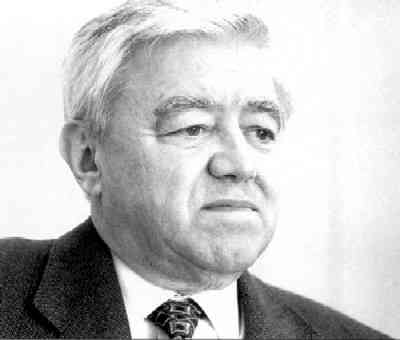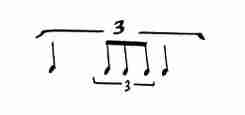
G amelan presents reality in musical form: it is cyclical yet linear, constantly alternating between event-overload and waktu kosong—‘empty time’. A person’s role within the ensemble is strictly defined and limited, only becoming meaningful in relation to the whole through kotekan. Culture is what we make of the world, both in creating cultural artifacts as well as in making sense of the world around us. Culture-making is an individual and collective civic duty.”
— Evan Ziporyn, MIT.
As non-Western chamber musics go, none, I think, is more beautiful than gamelan.
A gamelan is usually comprised of two metal percussion sets of bells—metallic drones, basically, plus some bronze or brass gongs—and each set is tuned to a different pitch-interval structure (‘laras’). One set is tuned to laras ‘sléndro’ (a pentatonic five-tone tuning system made up of approximately equidistant intervals), and the other set is tuned to laras ‘pélog’ (a heptatonic seven-tone tuning system with larger and smaller intervals). The gamelan’s elements are bulky and some of them are heavy, so the logistics and expense of touring with them are difficult. The MIT-based group, Gamelan Galak Tika, is one of a few gamelan ensembles touring regularly. Gamelan Galak Tika was founded in Cambridge, Massachusetts in 1993 by Evan and Balinese artists Nyoman Catra and Desak Made Suarti Laksmi. A part of the MIT Music and Theater Arts program, its membership is comprised of both students and members of the Cambridge community.
Gamelan tonality is not the only distinctive aspect of gamelan music; the rhythms are characteristic, too. The precise inter-relationship of the gamelan percussionists’ parts is known as ‘kotekan’. Difficult for Western ears and minds to recognize—kotekan can, like Indian carnatic music, be mistaken as aleatoric, random, concrète.
Gamelan is a visceral, physical chamber music. The word ‘gamelan’ means nothing more grand than ‘to hammer’. The percussion ensembles of Java and Bali often involve 10 to 30 members, but smaller gamelan ensembles exist as well. The word ‘gamelan’ implies a collectivism or ‘social’ hammering; in general, ‘gamelan’ doesn’t denote solo hammering by one individual. Besides the gongs and metallophones, a gamelan ensemble often includes hand drums, cymbals, bamboo flutes, and violin-like stringed instruments. For some gamelan pieces, vocal or ambient sounds are added.
P revailing scholarly analyses of international relations pay virtually no attention to music. And yet the political dimensions of music are all too evident. The terrifying realities of conflict and the search for peace have inspired composers throughout history, from Haydn’s anti-war message in Missa in Tempore Belli to the astonishing outpouring of musical creativity following the terrorist attacks of September 11, 2001. Few would question the political content of explicit musical texts, such as protest songs. The more difficult challenge, however, is to locate the significance not only of titles or sung passages (where references to the political are easy to find), but also of purely instrumental music.”
— Roland Bleiker, Of Things We Hear but Cannot See, in Resounding International Relations (Franklin, ed.), p. 179.
In follow-up to the previous
CMT post on separation of Music and State, I should mention that gamelan is the ethnic chamber music of Java and Bali, and is historically both a religion-sponsored sacred chamber music and a State-sponsored courtly and secular chamber music. The Balinese form of Hinduism prescribes gamelan for all ceremonial and liturgical events.
T he present Lao government is ideologically committed to the promotion of ethnic equality. The nominal equality of the state-constructed ethnic categories of Lao Lum, Lao Theung, and Lao Sung is officially celebrated in political rhetoric and administrative decrees. [But there is a] paradox that these official practices nevertheless result in the implicit affirmation of ethnic Lao political and cultural superiority. A popular restaurant features traditional Laotian live music. ... [But] the dance itself, as well as the musical accompaniment, contains no ethnic minority elements; instead, it is unmistakably ethnic Lao.”
— Jan Oveson, in Civilizing the Margins (ed., C. Duncan), p. 214.
 I
If you would like to experience a concert of contemporary gamelan music, you can do that next Saturday, 18-OCT-2008, at 14:30 at the brilliant, new
EMPAC at
Rensselaer Polytechnic Institute. Gamelan Galak Tika and Ensemble Robot will perform at the opening of RPI’s new Experimental Media and Performing Arts Center in Troy, New York. Or you can catch them in Boston later this month (Thursday, 30-OCT-2008, 19:30) in the intimate
Berklee David Friend Recital Hall at 921 Boylston Street. Gamelan Galak Tika will be performing new music by composers including Ramon Castillo, Midori Matsuo, Sachi Sato, Christine Southworth, and Po-Chun Wang.
Or, if you are in Kansas City this weekend, you can hear Gamelan Genta Kasturi at the
Urban Culture Project, La Esquina, 1000 West 25th St, Kansas City, MO, 18-OCT-2008, at 19:30, and 19-OCT-2008, at 14:00.
 G
Gamelan Galak Tika play on two complete gamelans, both ‘sléndro’ and ‘pélog’. [Incidentally, Galak Tika is not a cute, spacey corruption of ‘galactica’. ‘Galak Tika’ in Bahasa Kawi (classical Javanese, a dialect of Sanskrit) means ‘intense togetherness.’ And intense togetherness is surely the unabashed effect that listening to and performing gamelan chamber music has.] Have a listen to a clip from one of their recent recordings:








